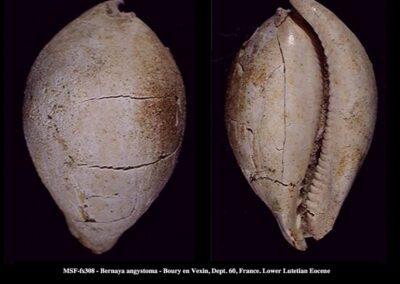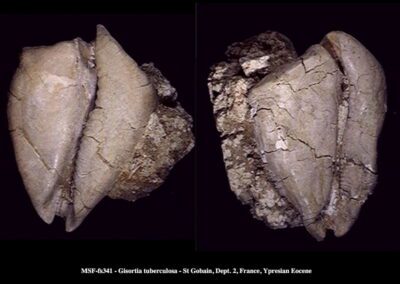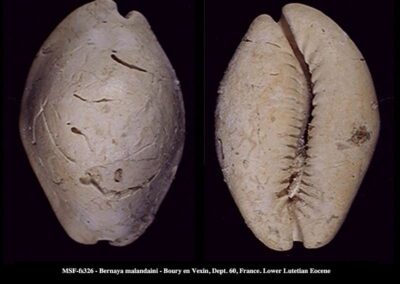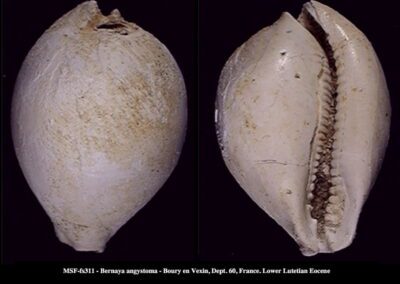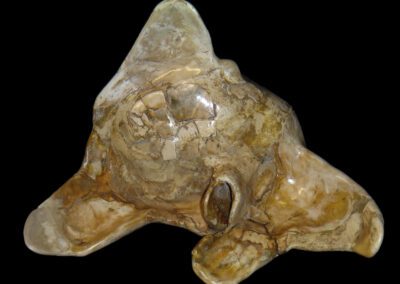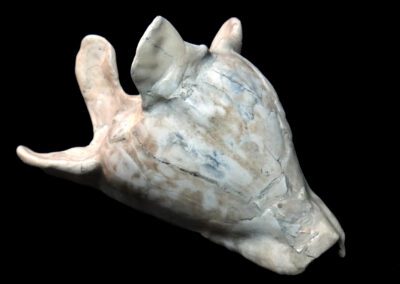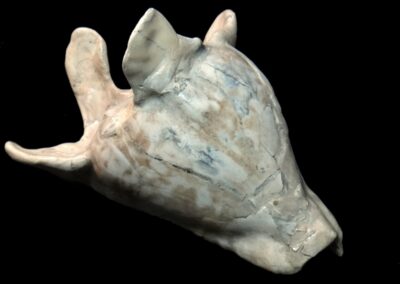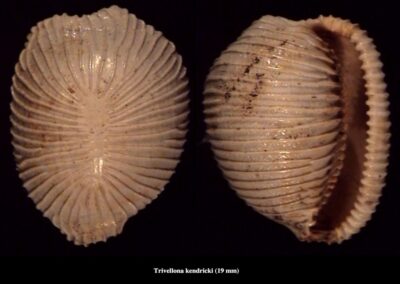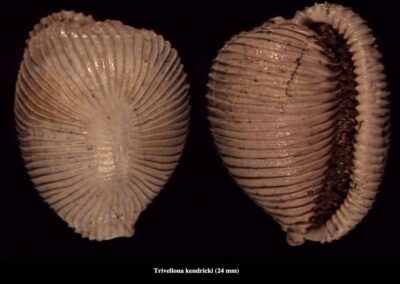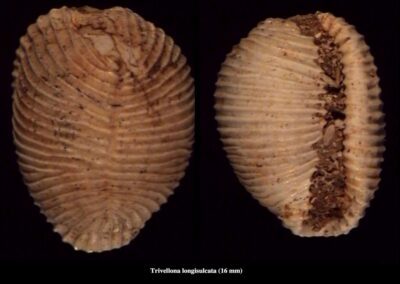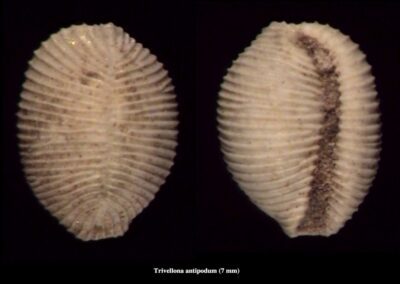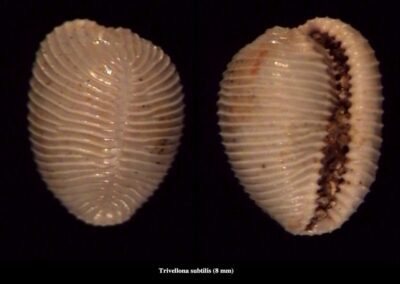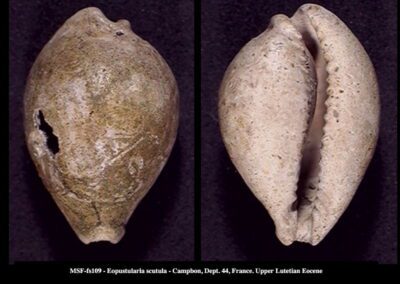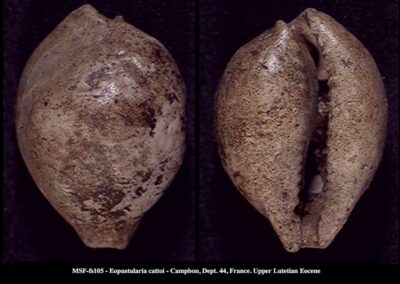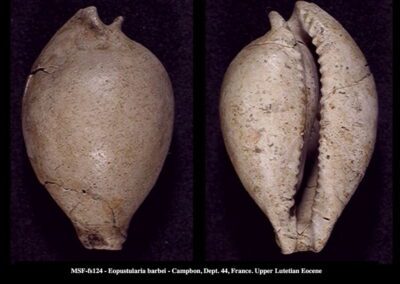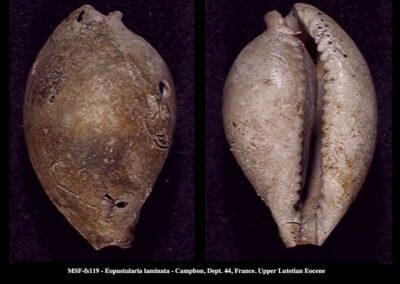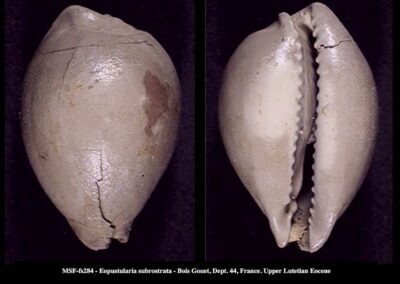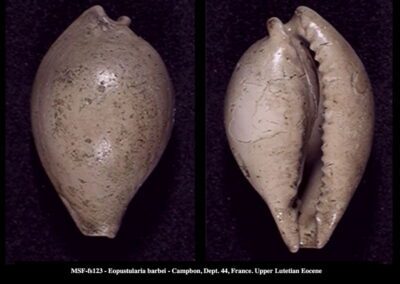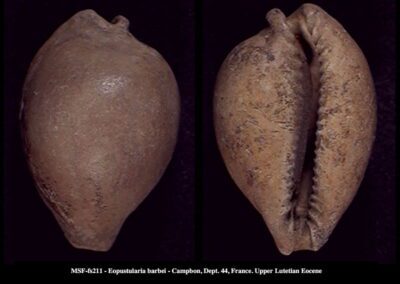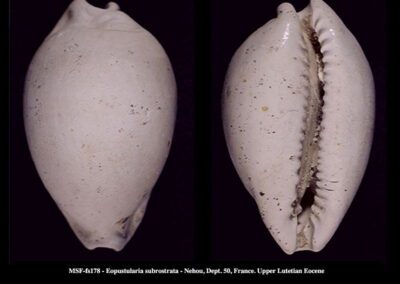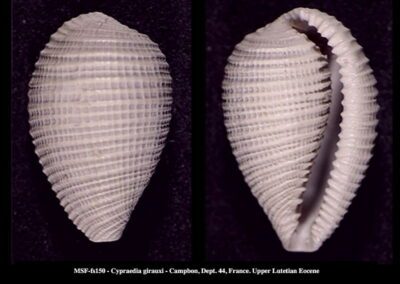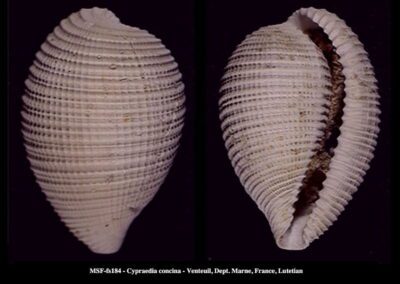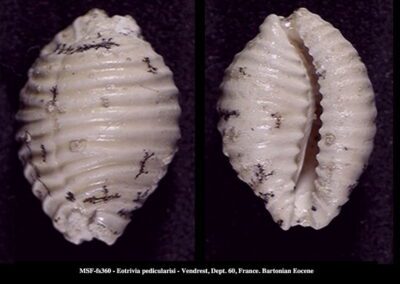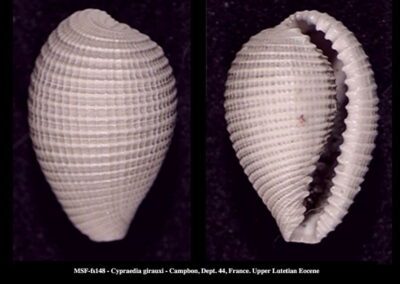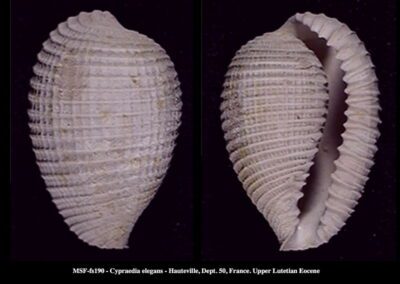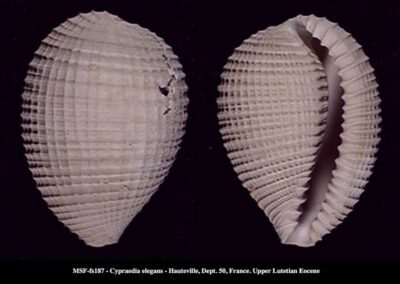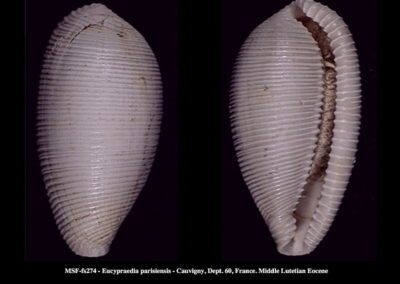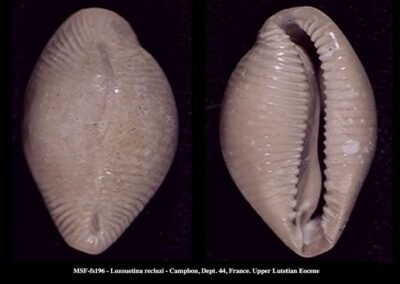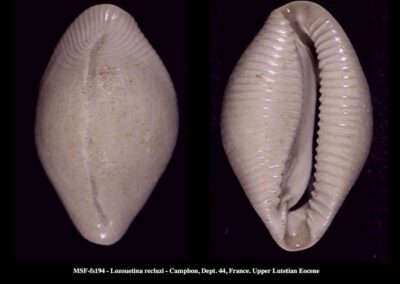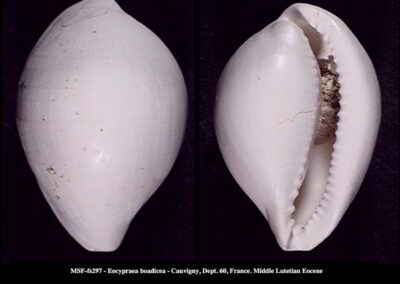Fossil Shells
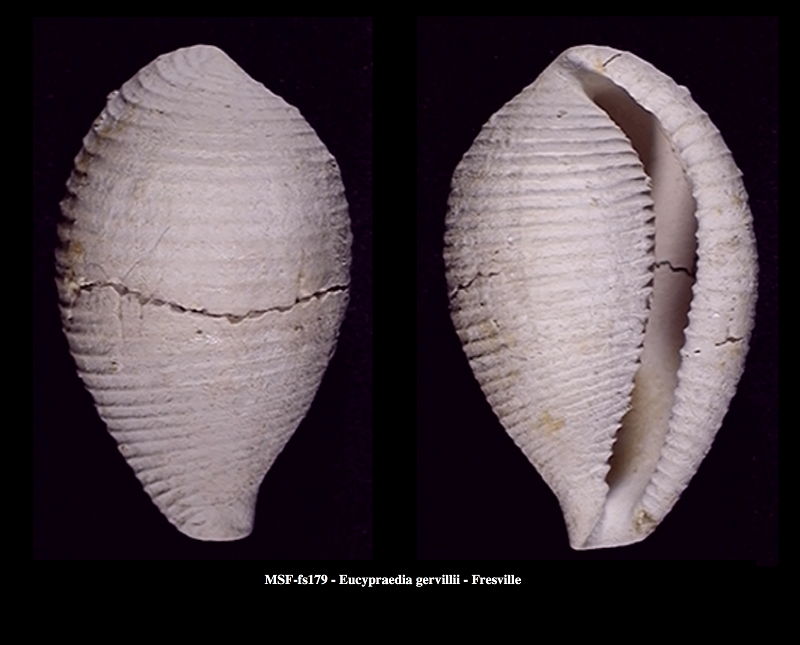
The MSF has given a lot of attention to assembling good collections of fossil seashells. For example, our collections host the holotype of rge famous Gisortia megaloptera, and a second, complete specimen of this fascinating species. Thereare numerous rare Pleurotomariids (Slit-Shells), and a growing collection fo Eocene cowries. In the words of Paul Sagan: You have to know the past to understand the present.
Shells of the Eocene
From the collection of Christian Romanek. These exceptional shells allow a glimpse at different families of Gastropods from the Eocene (Lutetian and Bartonian) of France.
Cowries of the Eocene
From the collection of Christian Romanek.
These exceptional shells allow a glimpse at long-extinct side branches of cowrie-evolution from the Eocene (Lutetian and Bartonian) of France.
Gisortia megaloptera
A gallery showing three specimens of the incredible Eocene fossil cowry from Gan, France. The holotype, measuring 236 mm, is deposited in the collection of the MSF. A 3D model can be downloaded here.
Trivellona
The genus Trivellona (family Triviidae) has several living species in the Pacific. In the Miocene, the genus radiated in Southern Australia, with the largest members of the family reaching nearly 40 mm.
Eopustularia of the Eocene
From the collection of Christian Romanek. These exceptional shells allow a glimpse at one of the oldest lineages of cowries from the Eocene (Lutetian and Bartonian) of France. The genus Eopustularia (also popular under the name Subepona) is ancestral to Propustularia and Nesiocypraea, which are still present in the deep water of the Caribbean and the Indo-Pacific. The shells depicted here were also used by Dolin & Aguerre (2018) who presented a comprehensive revision of the Eocene members of the genus.
Cypraeoidea of the Eocene
From the collection of Christian Romanek. These exceptional shells allow a glimpse at long extinct side branches of cowrie-allies from the Eocene (Lutetian and Bartonian) of France.





















